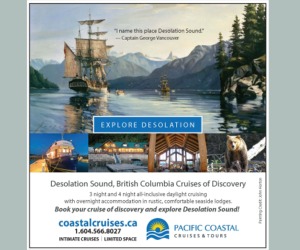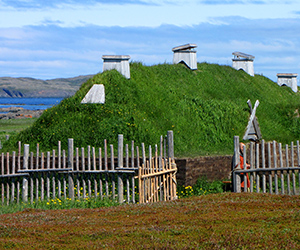CANADA HISTORY - Politics-Provinces
POLITICS - ALBERTA
Alberta’s history stretches far back into the mists of prehistory, long before it became one of Canada’s most dynamic provinces. In the ancient past, its landscape was shaped by glaciers and the forces of nature, a place where massive ice sheets covered the land, only to recede and reveal fertile plains. Thousands of years ago, the first peoples arrived, following herds of mammoth and bison across the rugged terrain. These early Indigenous groups, ancestors of the Blackfoot, Cree, Nakoda, and Dene, were the original stewards of the land, developing sophisticated ways of life based on hunting, gathering, and the seasonal migrations of the animals that sustained them. Their culture revolved around the bison, the lifeblood of the prairies, whose every part was used for food, clothing, shelter, and tools.
As centuries passed, Alberta’s Indigenous nations grew into complex societies with deep spiritual traditions and political systems rooted in kinship, diplomacy, and warfare. The arrival of horses in the 1700s, introduced by Spanish traders, revolutionized the plains peoples' way of life, expanding their territory and transforming the buffalo hunt into a grander, more mobile operation. The Blackfoot Confederacy, the Cree, and the Nakoda developed intricate trade networks that extended across the prairies, where they encountered fur traders from the east. The Hudson’s Bay Company and the North West Company, eager to exploit the rich fur resources, began to push into what would become Alberta in the late 18th century. Early traders like Peter Pond and Anthony Henday established forts along rivers and lakes, where European goods like guns, cloth, and metal tools flowed into Indigenous hands, forever changing the balance of power.
By the 19th century, the fur trade had reshaped the economic and political landscape of Alberta. Indigenous nations adapted to the new economy but also faced growing pressures as European settlement increased. The signing of Treaties 6 and 7 in 1876 and 1877 marked a significant turning point. These agreements, though meant to protect Indigenous lands and rights, often served the interests of the Canadian government, eager to open the West to settlers. The treaties laid the groundwork for the influx of European and American homesteaders who came to claim the vast prairie lands for agriculture. By the time the Canadian Pacific Railway reached Calgary in 1883, the floodgates were open, and Alberta was poised for transformation.
Alberta’s formal entry into Confederation came on September 1, 1905, when it became a province, carved from the Northwest Territories. The creation of Alberta was part of Prime Minister Wilfrid Laurier’s vision of a westward-expanding Canada, where the prairies would become the breadbasket of the nation. The early settlers who arrived were drawn by promises of fertile land and opportunities to start anew. Farmers from Eastern Canada, the United States, Britain, and Europe flocked to Alberta, their sod houses dotting the plains, as they broke the land and planted wheat, barley, and oats. The Dominion Lands Act offered cheap land, and the province’s population exploded. Politically, the fledgling province leaned toward the Liberal Party under its first premier, Alexander Rutherford, who oversaw the development of education, infrastructure, and government institutions that laid the foundation for Alberta’s growth.
Yet, Alberta’s political and economic path was never straightforward. The early 20th century was a time of rapid development but also political volatility. The rise of the United Farmers of Alberta (UFA) in the 1920s marked the emergence of agrarian populism, as rural communities, frustrated by the dominance of urban interests and the perceived neglect of the federal government, sought to take control of the province’s political machinery. The UFA’s victory in 1921 ushered in a new era, where cooperative movements and farmers’ concerns dominated the political agenda. But the Great Depression of the 1930s hit Alberta hard, with crop failures, falling wheat prices, and rural poverty ravaging the economy. It was during these dark times that William Aberhart and his Social Credit Party rose to power, offering an unusual but appealing solution to Alberta’s economic woes—Social Credit, a system that promised to redistribute wealth and put money directly into the hands of citizens.
Aberhart’s Social Credit government, which took power in 1935, transformed Alberta’s politics. Although his radical financial theories never fully materialized, the party’s populist rhetoric struck a chord with voters. Aberhart’s successor, Ernest Manning, led Alberta through a period of relative stability, but the discovery of oil at Leduc No. 1 in 1947 would fundamentally reshape the province’s identity. What had once been a primarily agricultural province suddenly found itself sitting on a sea of wealth. Alberta’s oil industry, driven by a global demand for energy, boomed. Under the leadership of Premier Peter Lougheed in the 1970s, Alberta took control of its natural resources, ensuring that the profits from oil and gas development would stay within the province.
Lougheed’s Progressive Conservative government marked an era of modernization and economic growth. He established the Alberta Heritage Savings Trust Fund, designed to capture a portion of oil revenues for future generations. Lougheed was a shrewd and pragmatic leader, negotiating fiercely with the federal government to maintain Alberta’s control over its resources while also investing in the province’s social services and infrastructure. However, Alberta’s economic success came with challenges. The province became heavily reliant on the oil industry, making it vulnerable to fluctuations in global oil prices. When oil prices crashed in the 1980s, Alberta faced a deep recession, forcing the province to grapple with the downside of its resource-dependent economy.
Despite these economic rollercoasters, Alberta developed a strong identity based on self-reliance, entrepreneurship, and a fierce sense of independence. The province’s political landscape reflected this, with a long-standing tension between Alberta and the federal government in Ottawa. Western alienation became a powerful force, as many Albertans felt that their province was being unfairly treated by a federal government more concerned with Central Canada’s interests. The rise of the Reform Party in the 1990s, led by Albertan Preston Manning, was a direct response to these grievances, as Alberta’s conservative, resource-driven politics found a national voice.
In the 21st century, Alberta’s political and economic fortunes have continued to evolve. The Progressive Conservative dynasty that dominated Alberta for over four decades fell in 2015 when the New Democratic Party (NDP), under Rachel Notley, swept to power on a wave of dissatisfaction with the status quo. The NDP government faced immense challenges, including managing the economic downturn caused by falling oil prices and navigating the increasingly polarized debate over environmental policy and resource development. In 2019, Jason Kenney’s United Conservative Party (UCP) brought Alberta back to its conservative roots, emphasizing pro-oil policies, pipeline expansion, and opposition to federal carbon taxes.
Alberta’s development from a frontier province to a modern economic powerhouse is a story of transformation, conflict, and resilience. Its people, shaped by the harshness of the land and the volatility of its economy, have cultivated a spirit of independence and self-sufficiency. From the early fur traders and Indigenous nations who first laid claim to its rivers and plains, to the settlers who plowed the land, to the oil workers who fuel its modern economy, Alberta has been defined by its ability to adapt to changing circumstances.
The province’s future will undoubtedly be shaped by the same forces that have defined its past: its vast natural resources, its geographic position in the Canadian West, and its people’s unyielding determination to shape their own destiny. Alberta remains a crucial player in Canada’s economic and political landscape, a province where the tension between resource extraction and environmental stewardship, between local autonomy and federal authority, continues to drive its story forward. And through it all, the legacy of its leaders—from Rutherford to Lougheed to Kenney—will continue to echo in the halls of government and the oilfields that fuel Alberta’s dynamic economy.












